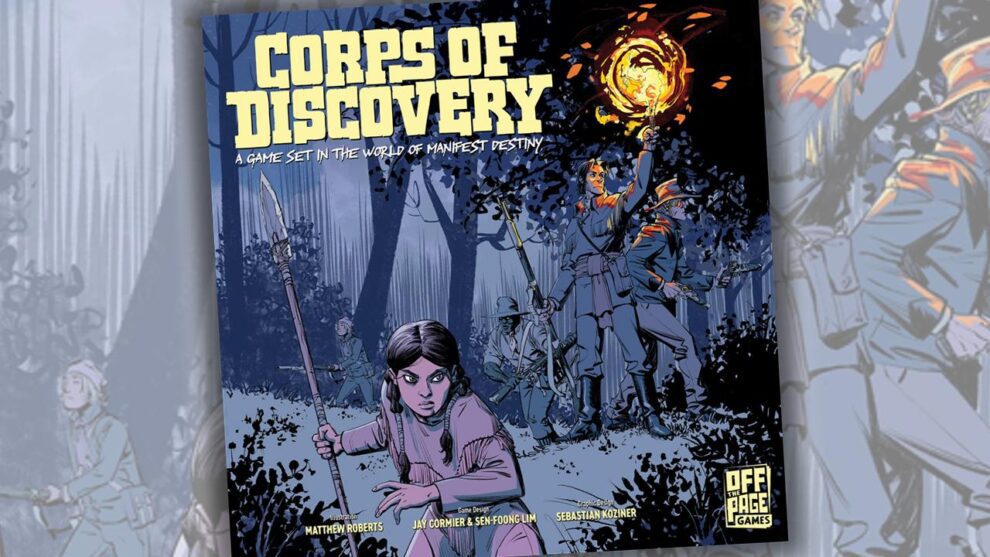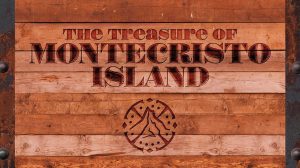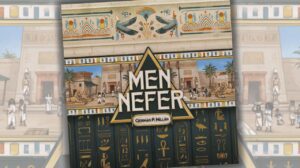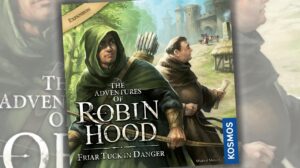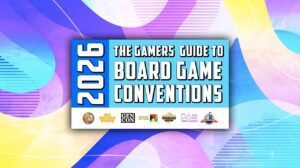Disclosure: Meeple Mountain received a free copy of this product in exchange for an honest, unbiased review. This review is not intended to be an endorsement.
A couple years ago, I went to a convention where I had the chance to sit with one of my favorite people in tabletop, Jay Cormier. Cormier is the designer of a couple of absolute gems—Harrow County: The Game of Gothic Conflict, and Mind MGMT: The Psychic Espionage “Game.” His publishing line, Off the Page Games, has a unique mission to deliver games based on graphic novel IP featuring exceptional artwork and some wild production elements.
During that meeting with Jay, we did a demo of Corps of Discovery: A Game Set in the World of Manifest Destiny, designed by Cormier and Sen-Foong Lim. (Lim is Cormier’s partner on other designs, such as the underrated strategy game Belfort.)
I sat with two strangers during that demo and we enjoyed walking through the deduction elements of the game’s design during our partial play. I’m a big fan of deduction games, from Clue all the way up through titles like Turing Machine and The Search for Planet X, so I was excited to get the review copy of Corps of Discovery to the table now that the game is in the wild.
I played Corps of Discovery eight times for this review; for perspective, I usually do 3-4 plays before I post a review, so that alone has to mean something. But it pains me to say that Corps of Discovery is more interesting as a worldbuilding exercise than a game.
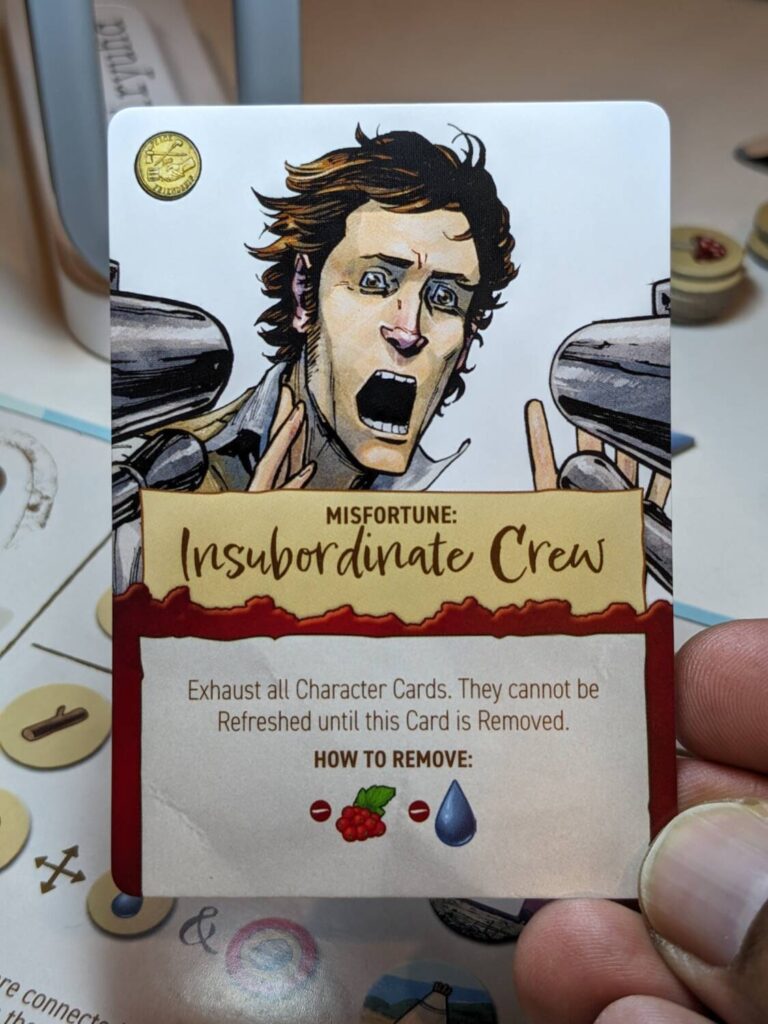
Lewis, Clark, Sacagawea
Corps of Discovery is set in the world of Manifest Destiny…well, that world, but different from the one you are probably thinking of.
The game accommodates 1-4 players who play the roles of characters from the Manifest Destiny graphic novel published by Skybound. That means that William Clark and Meriwether Lewis are here to take on the task of exploring the western United States in the early 1800s…because the President, Thomas Jefferson, needs a team of explorers willing to destroy demonic monsters responsible for a variety of terrible acts across the country.
Prior to this game, I hadn’t heard of the Manifest Destiny comic. The illustrations by Matthew Roberts (who did the illustrations for both the graphic novel and the game) are superb and do an excellent job of drawing the player into the grind of the task. Scared citizens look frightened beyond compare. The gear illustrations are cool. Much like the character imagery for Harrow County, I love the way each of the base game’s six characters are profiled in Manifest Destiny.
Roberts visually cemented the world for me: things aren’t good, and if I can’t move quickly to save the country’s citizens from crazed minotaurs, things are gonna get a lot worse before they get better! Also, and maybe more important, Manifest Destiny (the novel) dumps the colonial view we typically get when recounting this period of history and enlightens the perspective for a modern audience.
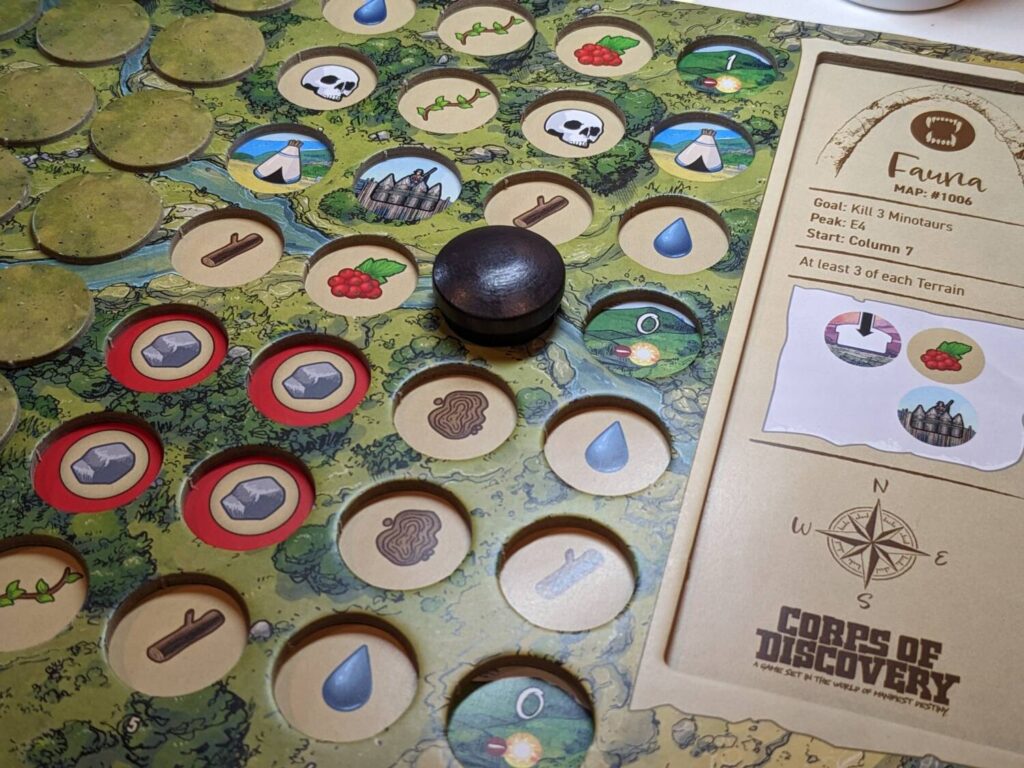
Gameplay here is cooperative. Each player takes on Clark, Lewis, or one of four other characters…and in a minor surprise given the context, Sacagawea is not one of the characters in this game. (I am guessing Sacagawea is available only via expansion for the game’s crowdfunding backers, since she is pictured on the cover of the base game’s box.) Players use map sheets and a board with tokens that cover each space to move their party around the game world to discover camps, collect resources, and defeat those demonic beings.
The game’s maps use a logic system detailed on a separate reference board that players must use to deduce where things are. Water is always near wood, and vice versa; tipis are always within range of food, but also adjacent to monster tokens. Using this system, players take turns flipping unexplored tokens, with goals tied to the choice of nearly 20 maps across the game’s two chapters. In the Fauna chapter, you’ll need to defeat three minotaurs to win. In the Flora chapter, burning a giant plant to the ground is the main task.
This sounded interesting on paper, and I enjoyed my demo play. After two training map plays, I remained intrigued. But after six plays of the Fauna chapter, I was surprised to find that the game was so procedural…and I was shocked at the game’s difficulty. I only won two of my eight plays.
The skill issue may or may not be my own, but as I found in my last two plays, failing challenges became a key decision point thanks to the very limited resources that had to be used to kill off monsters. But I kept coming back to the same question: why isn’t Corps of Discovery more fun?
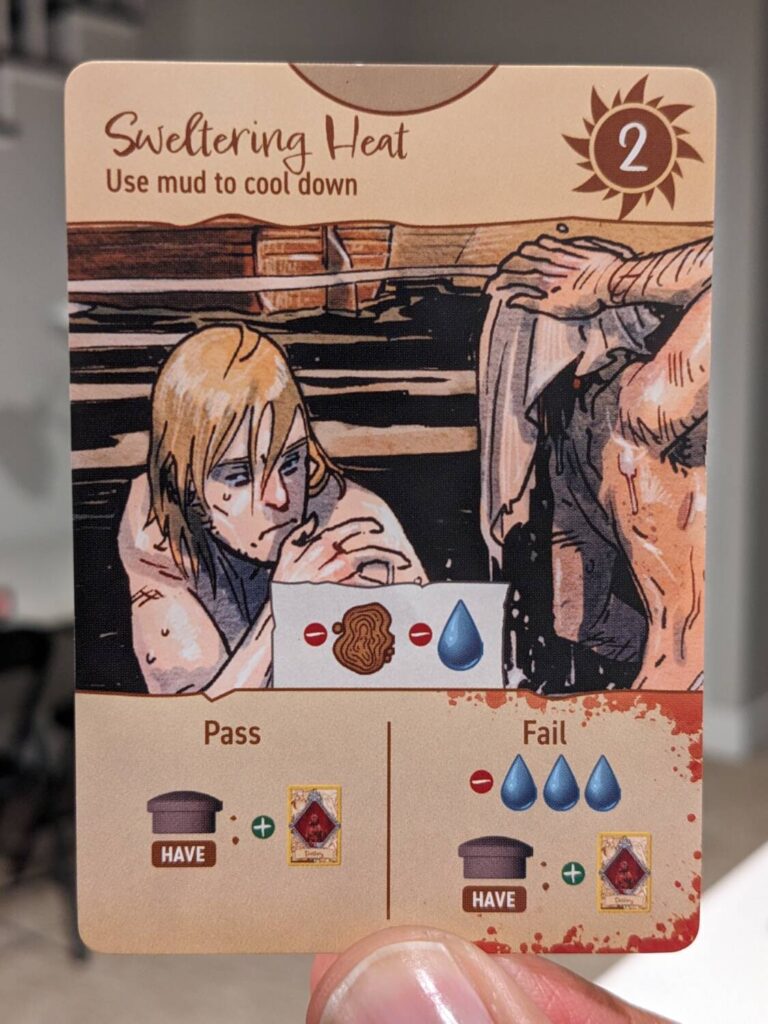
Right Versus Wrong
Corps of Discovery gets more right than wrong. The game’s puzzle/deduction system makes sense and allows for a very easy onboarding process. I was up and running in about 20 minutes after punching the game and reading the rules, and the manual’s back cover and reference board list almost everything one needs to play.
Corps of Discovery looks great and builds an incredible world. Because I have won a couple times, I now know it is possible to win, and the game had a nice drip of “let’s run this back one more time” in cases where I lost the game quickly. Corps of Discovery is a very light version of something like Robinson Crusoe, in that players are managing a very tight pool of resources that have to be spread across an impossible variety of tasks. I don’t think there’s a question in my mind that most players will lose this game more than they win it, especially as they learn the game’s systems.
I am OK with the level of challenge and I liked the production. But winning didn’t feel as satisfying as it did in other titles. Sometimes, especially in my win of one of the maps of the Fauna chapter, I got lucky thanks to a Destiny card that had an item that allowed me to extend a round by three extra turns. I didn’t plan especially well, but things worked out. In a deduction environment, I like the feeling that I planned well and deduced the scenario correctly. I made inferences, read the room, then guessed that Miss Scarlet used the revolver in the Conservatory.
In Corps of Discovery, it was sometimes difficult to guess at what resources I might need in 2-3 rounds to defeat a minotaur. I always knew I needed food to survive the end-of-round cleanup questions, but it wasn’t always clear how many vine resources there might be on a map…in a situation where one of the ways to kill a minotaur was tied to having vines. I might frame Corps of Discovery as a strategy game with light deduction elements, now that I’ve played a few times.
Being such a fan of the other games in the Off the Page catalog, Corps of Discovery was a bit of a miss for me…expectations are a thing, you know? Give this a look if you are a fan of the publisher’s other titles, particularly as a fan of beautiful, distinctive artwork in a darker version of the world you think you know.


